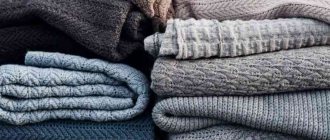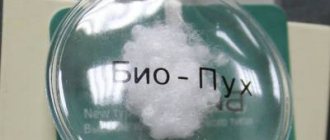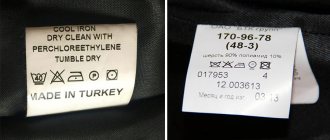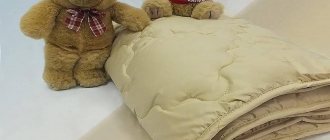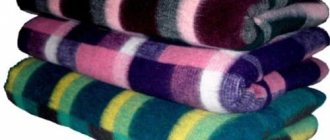Features of wool products
There are several types of wool fibers and fabrics, which differ in the method of manufacture, origin, and the presence of synthetic impurities:
- Angora is a wool fabric made from goat or rabbit fluff. It is very pleasant to the body and is light and has low density.
- Camel wool is a 100% natural, environmentally friendly product. Its main properties are antibacterial, antistatic, light, hypoallergenic.
- Cashmere is a wool or wool blend fabric made from the down of cashmere mountain goats, synonymous with airiness, softness, and a symbol of prosperity.
- Sheep wool is a common type, known for its medicinal properties, and is considered one of the warmest.
- Merino – obtained from the wool of “fine-wool” Merino sheep. The yarn is smooth, silky, flexible, thermally insulating, and can also repel odors.
- Mohair is a fabric that partly consists of angora (about 80%), the remaining 20% is synthetic fibers. Mohair is less susceptible to deformation, is hypoallergenic and very durable.
Depending on the type, the properties and, consequently, the care requirements change. However, all types consist entirely or partially of natural hair, which, like human hair, is covered with tiny scales. Under the influence of water, temperatures and cleaning agents, these scales open, which makes the wool especially vulnerable. Left without protection, the pile sticks together, becomes compacted, deformed, and loses its airiness and softness. Therefore, it is important to carry out the process of washing a sweater, socks, hat or trousers made of wool as carefully as possible.
How to wash woolen items so they don't shrink?
A nice feature of natural wool is that it usually gets dirty a little. In addition, some stains can be easily removed by dry cleaning, and regular ventilation in the fresh air helps get rid of foreign odors. But, of course, you can’t do without washing. To ensure that the accessories do not lose their shape, you need to take into account some nuances:
- first of all, it is important to carefully read the information on the product label, where the manufacturer indicates basic care recommendations in each specific situation;
- you need to use suitable cleaning products, remember the temperature regime;
- There is no need to soak woolen items for a long time, rubbing and squeezing them hard. You can only slightly squeeze the product to remove excess moisture;
- It is advisable to act quickly, the total cleaning time should not exceed 40 - 50 minutes;
- It is necessary to dry capricious clothes only in a horizontal position.
You should first turn things inside out, fastening all the buttons and fasteners.
These rules apply to hand and mechanical washing. Depending on the chosen method, some additional features can be highlighted.
Features of hand washing
Hand washing allows you to create the most gentle conditions, so many manufacturers recommend this cleaning method for woolen items. In this case, you need to remember the appropriate temperature and generally act carefully!
- It is not recommended to soak things, except for serious contamination.
- Do not rub, twist or wring out woolen items too much. They are only gently rinsed in warm water with a suitable detergent.
- Do not use aggressive powders or bleaches containing chlorine (they can damage the material).
- There is no need to overuse a large amount of different chemicals, since it can be quite difficult to completely rinse it out of the fibers.
- You need to wring things out very carefully without twisting them.
- Dry woolen items on a terry towel in a horizontal position. On a clothesline or hanger, a wet wool sweater will quickly lose its shape and stretch.
- After complete drying, you can lightly iron the product, first turning it inside out.
If possible, it is better not to wash clothes made from natural wool too often.
Surely many people are interested in the question: is machine washing acceptable for capricious natural fabric? Let's try to figure this out further.
Machine washable - is it possible or not?
The most preferred option for wool clothing is hand washing for a number of reasons. Fortunately for many housewives, using a washing machine is also acceptable (if the label on the product does not prohibit it). In this case, you need to take into account some nuances:
- You should first turn the product inside out.
- As a rule, modern household appliances provide a special program for woolen accessories. If it is missing, you can select a delicate wash cycle in cool water with slow speed.
- You need to disable the spin function.
- After automatic washing is completed, the items are carefully blotted with a terry towel and dried in a horizontal position.
For drying, do not use a hairdryer, hot iron or heating devices - the wool should dry naturally.
If you approach machine washing with full knowledge of the matter, you won’t have to worry about the safety of your favorite sweater. Also, some clever tips can make the cleaning process much easier.
Washing rules
Some people prefer to buy synthetic clothing because natural wool is quite difficult to care for.
There are several rules that will help you wash woolen items correctly:
- It is better to clean them as rarely as possible, because frequent exposure to detergents harms the fibers.
- Before washing, be sure to examine the sew-in tag. It indicates information about the acceptable mode, washing and ironing temperature.
- Some items can only be washed by hand, this is also stated in the instructions.
- To reduce damage to the product, it is better not to wash it, but to get rid of unpleasant odors by airing it in the fresh air.
- It is advisable to clean heavy stains before washing using a dry method.
Reasons why wool shrinks after washing
Surely many have experienced the unpleasant shrinkage of their favorite clothes after washing. There are three main reasons why wool fabric shrinks:
- The use of household chemicals that are not suitable for wool . Aggressive detergents can cause natural threads to shrink significantly, so only specialized softeners designed for this type of fabric should be used.
- Rapid rotation of the drum during machine washing. Natural fibers are covered with keratinized scales. They can “fluff” and adhere to each other, which leads to a decrease in the size of the products. For this reason, it is desirable to reduce mechanical stress to a minimum.
- Sudden temperature changes. Natural fabric cannot withstand sudden temperature changes; this inevitably leads to deformation of the material.
The optimal temperature for woolen clothing and accessories is 30–35 degrees. Experts emphasize that products need to be rinsed in the same water, otherwise the fabric may lose its original shape.
Following some simple rules will help you avoid unpleasant incidents and preserve the attractive appearance of your favorite wardrobe items for a long time.
What can't you do?
Since woolen fabrics are delicate, there are precautions that will help protect them from damage. Here are some recommendations common to all clothing of this type:
- Wool does not tolerate hot water, boiling is also prohibited. In addition, you should not allow sudden changes in temperature during the washing process.
- It is not recommended to soak the material for a long time; the maximum allowable time is 30 minutes.
- You cannot twist, squeeze, stretch, or actively rinse the wool, since under the influence of external force it deforms very quickly.
- The spin speed in the washing machine should be set to the minimum.
- Washing with aggressive detergents is prohibited; low-quality powders and gels should also not be used.
- You cannot pour dry powder directly onto woolen fabric; before use, it must be dissolved in a large amount of water and whipped into foam.
- You cannot dry wool items hanging, that is, on ropes or hangers. Since the fabric does not tolerate high temperatures, it is not worth drying it on a radiator, with a hairdryer or other thermal influences.
- Whether ironing is allowed or not can be found out from the instructions on the label. Some types are tolerant of hot steam, while others may lose their shape and softness.
Water temperature
Wool should be washed at a temperature not exceeding 40°C; washing at 30°C is optimal. If you use hot water, the product loses strength, as a result of which it can shrink, become hard and unpleasant to the touch. Raising the temperature to 60-70°C is permissible only if you need to make a sweater a couple of sizes smaller, but you should do this as carefully as possible.
Detergents
Conventional washing powders are not suitable for materials made from natural wool fibers. It is recommended to use special ones for wool and silk, which prevent caking and do not destroy the structure. However, washing gels marked “For delicate fabrics” are considered more effective and gentle. They promote high-quality removal of contaminants and are washed out better without leaving streaks.
Unfortunately, no powder or gel will help maintain the softness of wool if the water in which the wash is carried out has an increased level of hardness. You can find out by observing how the liquid from the tap behaves when boiling. If scale remains on the walls of a saucepan or kettle, the water hardness is increased. In this case, it is recommended to use softeners and conditioners for washing, which will give clothes softness and freshness. For the same purpose, you can take a 9% vinegar solution. Acid is also suitable for preserving color: pour it into the conditioner compartment if the item needs to be washed in a washing machine, or use it when washing by hand.
Attention! If you urgently need to remove a stain, but you don’t have a suitable product at hand, you can use shampoo. It has a more gentle effect than conventional products.
Procedure
Woolen items should be washed in the correct order, strictly following the following procedure:
- Preparing for washing. Fasten all the buttons and clasps, if any, remove everything from the pockets, and turn the sweater inside out.
- Removing dirt with a brush. You can clean the wool with a small amount of glycerin heated in a water bath. It is worth considering that the bristle of the brush should be very soft and the friction very weak. Hydrogen peroxide, which should be moistened with a cotton pad, also removes stains well.
- Soak. This step is necessary if the dry method did not help, there are strong stains left that may not be washed off. You should not soak things for a long time, as staying in water destroys the structure of the fibers. You can leave them in the detergent solution for a maximum of an hour.
- Wash by hand or using an automatic machine. In the first case, it is easier to control the degree of damage, while the second method requires less time and effort. It is important to wash no more than 40-45 minutes.
- Drying. On a horizontal surface at room temperature.
- Ironing. According to the directions on the product label.
How to wash cotton and satin items?
Cotton fabrics are durable and resistant to high temperatures, and also absorb moisture well, but they can shrink when washed. For cotton items, it is recommended to hand wash in warm water at 30-40 °C or machine wash on a delicate cycle. For colored products, it is better to use powder marked “Color”. When washing cotton items, it is not recommended to use powder with bleaching additives. If the product sheds a lot, it should be washed in cold water and dried flat immediately after rinsing, without spinning. If the product is slightly colored, just fill it with hot water with the addition of soda and leave for 10-12 hours, then wash and rinse several times.
To simply “refresh” things made of satin, a water temperature of 40 °C will be quite sufficient. To remove stains and dirt, it is recommended to wash items at 60 °C. For washing white laundry, use all-purpose detergents, and for colored laundry, use mild detergents and products without bleach.
Secrets of a good housewife. The most popular questions about washing and cleaning the house Read more
Features of washing in a washing machine
If you don’t have the time or opportunity to hand wash, for example, a wool blanket or sweater, a washing machine will help.
Before the washing procedure, you must do the following:
- Check pockets for forgotten small items: coins, pins, etc. They can ruin both clothes and equipment.
- Remove all removable accessories and cover non-removable ones with nail polish - this way the possibility of rust or other damage is minimized.
Nowadays, most models of equipment have a “For delicate items” mode, which helps to remove dirt as gently as possible: the drum makes the least number of revolutions, practically without damaging the sweater.
In the absence of these modes, wool should be washed in a washing machine using “Quick 30°” or “Hand Wash”, spin – minimum number of revolutions. It is better to add an additional rinse.
Proper drying
Since it is prohibited to dry products in a vertical position, it is necessary to place them on a horizontal surface, for example, on a table. Under a woolen item you need to place a fabric that absorbs moisture well, a terry towel will do. Products must be turned over every half hour to hour so that they dry evenly. Of course, this method requires some effort, but it will help maintain shape. Drying can be done outdoors, but it is better to avoid direct sunlight.
Drying Features
Follow a few simple rules:
- Do not twist the product. Just squeeze them lightly with your hands.
- To get rid of excess water, use a terry towel.
- Dry items in a horizontal position. Lay them out on a flat surface with a cloth underneath and let them dry naturally.
- Do not hang sweaters or cardigans on a line, as they will stretch under their own weight.
- Do not dry things near a heat source, on a radiator or heater.
How to bleach a woolen item?
Everything white eventually becomes dull, yellowish or grayish. However, if the whiteness of ordinary picky material is restored using boiling and soaking with bleach, then such methods are not suitable for delicate ones.
Here are a few methods to help whiten wool:
- Baking soda and ammonia work well with old yellowness. 1 tbsp. l. It is necessary to dilute it in 5 liters of cool water, add 2-3 drops of ammonia, soak the product in the resulting liquid for 30 minutes, wash it in an automatic machine or by hand.
- Hydrogen peroxide will help bleach white woolen items. It needs to be added to water (1:8), then soak the clothes in this solution for an hour.
- Dissolve about 500 g of salt in 5 liters of water, leave the wool for half an hour, then wash with conditioner.
Ironing
Some items can be ironed by first turning them inside out. It is better to do this through gauze or thin cotton cloth soaked in a mixture of a glass of water and half a tablespoon of table vinegar. This way you can avoid the appearance of shine on the material. Ironing helps to stretch out shrunken clothes a little. To do this, you just need to moisten it a little. The iron is set to position 2 or “wool”, depending on the model of the electrical appliance.
When ironing, do not press hard on the iron so as not to greatly deform the clothes. An exception to the rule is when the material needs to be specially stretched.
How to get shrunken clothes back into shape
During washing, clothes may shrink. In this case, you can try to stretch it. Therefore, it is necessary to know at what temperature things shrink so as not to spoil the product. There are several ways to restore shrunken clothes.
1 way. Turn the clothes inside out and moisten with a spray bottle. Then stretch it in different directions with your hands and let it dry. Method 2. Gives more effective results. Warm temperature water (not higher than 30 degrees) is poured into the container. Water that is too cool can further change the shape. Add a little conditioner intended for rinsing. After 10 minutes, remove the product and remove the water with a terry towel. Place on a flat surface in a horizontal position, straightening it out. When the item is dry, every 20 minutes you need to slightly stretch the material in different directions. You can also put the clothes on yourself if it is not too uncomfortable. It is convenient to stretch the hat so that it does not shrink, drying it in a three-liter jar. 3 way. Considered the most radical. Apply if the first two options do not help. However, there is a risk of damaging the product. Sequencing:
- make a soap solution;
- add 3 tbsp. lie ammonia and 1 tbsp. lie turpentine;
- soak for 24 hours;
- stretch carefully.
It is better to perform such actions with things that contain only wool. Since after a long stay in the mixture, the structure of the fibers is damaged and the warming qualities deteriorate.
Before stretching an item, you should also read the care instructions on the label. If individual parts have come together (sleeves, collar), not the entire product can be wetted.
It is advisable to store washed clothes on a shelf in a closet. It is recommended to carry out treatment against moths, which can damage the material. Bulky things are placed down and light things on top. It is necessary to periodically remove and air the wool. This will prevent creases from appearing.
Now that you know how to properly wash woolen items, you can provide proper care at home.
Tips for care and use
It is very important to properly care for woolen items so that they last as long as possible. Here are some recommendations:
- A woolen item that has shrunk after washing should be slightly wetted, ironed through gauze at a low temperature, smoothing it, and given the desired shape.
- You should not try to pull out the pills from a sweater with your hands, much less cut them off with scissors. There are scallops and electric machines for this.
- You should not overuse dry cleaning, even if dirt can only be removed with its help. The substances used in the cleaning process gradually corrode and thin the fibers.
- The ties can be removed using a crochet hook: with the tool you need to pick up the loop that has come out from the inside and carefully pull it back.
- Woolen clothes should be stored on a shelf or in a drawer; they may become deformed on hangers.
- Moisture is the enemy of wool, so you need to avoid damp areas when choosing a storage location.
